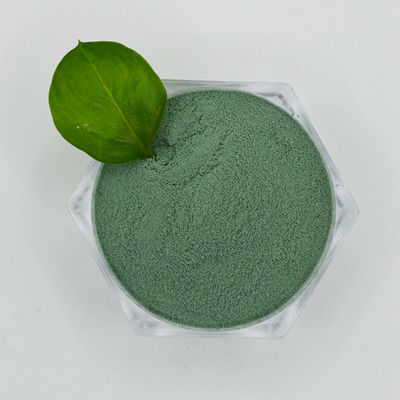Chromium Amino Acid Chelate 8%
| Appearance |
Green Powder |
| Amino Acid |
≥25% |
| Chromiun |
≥8% |
| Soluble |
slight soluble |
| Package |
20kg/bag |
| Grade |
Feed Grade |
| Usage |
Feed Additive |
| MOQ |
1 ton |
Sichuan Shihong Technology Co., Ltd. is a high-tech enterprise integrating scientific research, production, sales, service and import & export trade. It specializes in the R & D and production of Amino Acids and Amino Acid Chelates for Agriculture, Feed and Chemical industries.
We have an independent R & D department and a standard professional laboratory. The laboratory is equipped with advanced detection instruments such as High Performance Liquid Chromatography, Atomic Absorption Spectrophotometer, Ultraviolet Spectrophotometer, Polarimeter and Kjeldahl Nitrogen Determinator, which can detect the contents of various metal elements, amino acids, total nitrogen, ammonia nitrogen and organic matters.
Background
Adding amino acids to feed has been widely used. Generally, the content of lysine and methionine in the plant feed based on grain and soybean meal is low, which can not meet the needs of animals. Adding amino acids can greatly save the amount of opal, reduce the feeding cost, and improve the production efficiency of animals.A new type of feed protein was produced by combining amino acid with chromium. Internationally, Amino Acid organic chromium is used as a feed anti-stress additive, and most of the chromium forms in the feeds of common diets are organic chromium. Inorganic chromium is difficult to be absorbed and its absorption rate is very low, while the absorption rate of organic chromium is relatively high up to 10-25%.
Chromium is an essential trace element for humans and animals. Adding chromium to animal rations can reduce stress, enhance immunity, improve endocrine, promote animal growth, increase reproductive performance and improve carcass quality.
As a class of important feed additives, organic chromium has a wide range of applications in the feed industry. Organochromium can significantly promote the growth of animals, significantly improve the lean meat rate of animals and the egg production rate of chickens and ducks, and has important practical significance in the application of livestock and poultry production.
The product is non-toxic and harmless, the production process is basically free of three wastes, in line with environmental protection requirements, and is increasingly being widely used in the livestock industry.
Conclusion of chelated organo chromium
Chromium is an essential trace element for livestock and poultry growth, is the active center of GTF, and assists insulin to play an important role in sugar, fat and protein metabolism and nucleic acid synthesis in animals. Adding organic chromium in livestock production is of great significance. Adding organic chromium in the diet can significantly improve animal performance, enhance immunity, resist stress, improve reproductive performance and improve carcass quality. The most suitable amount of chromium for animals of different species, different states and different physiological periods needs to be further studied.
Application field
This product is only used as an animal feed additive.
Not recommended for food, health products and other fields.
Chromium can maintain the content of normal cholesterol in the blood and affect the synthesis and clearance of fat and cholesterol in animal liver. If the body lacks chromium, the activity of insulin will be significantly reduced, resulting in the disorder of lipid metabolism. After chromium supplementation, it can not only enhance the activity of insulin, regulate lipid metabolism and improve lipid status. Moreover, it can enhance the activities of lipoprotein lipase (LPL) and lecithin cholesterol acyl transferase (LCAT), and make these two enzymes participate in the synthesis of high-density lipoprotein (HDL), thus regulating lipid metabolism.







 Your message must be between 20-3,000 characters!
Your message must be between 20-3,000 characters! Please check your E-mail!
Please check your E-mail!  Your message must be between 20-3,000 characters!
Your message must be between 20-3,000 characters! Please check your E-mail!
Please check your E-mail! 















